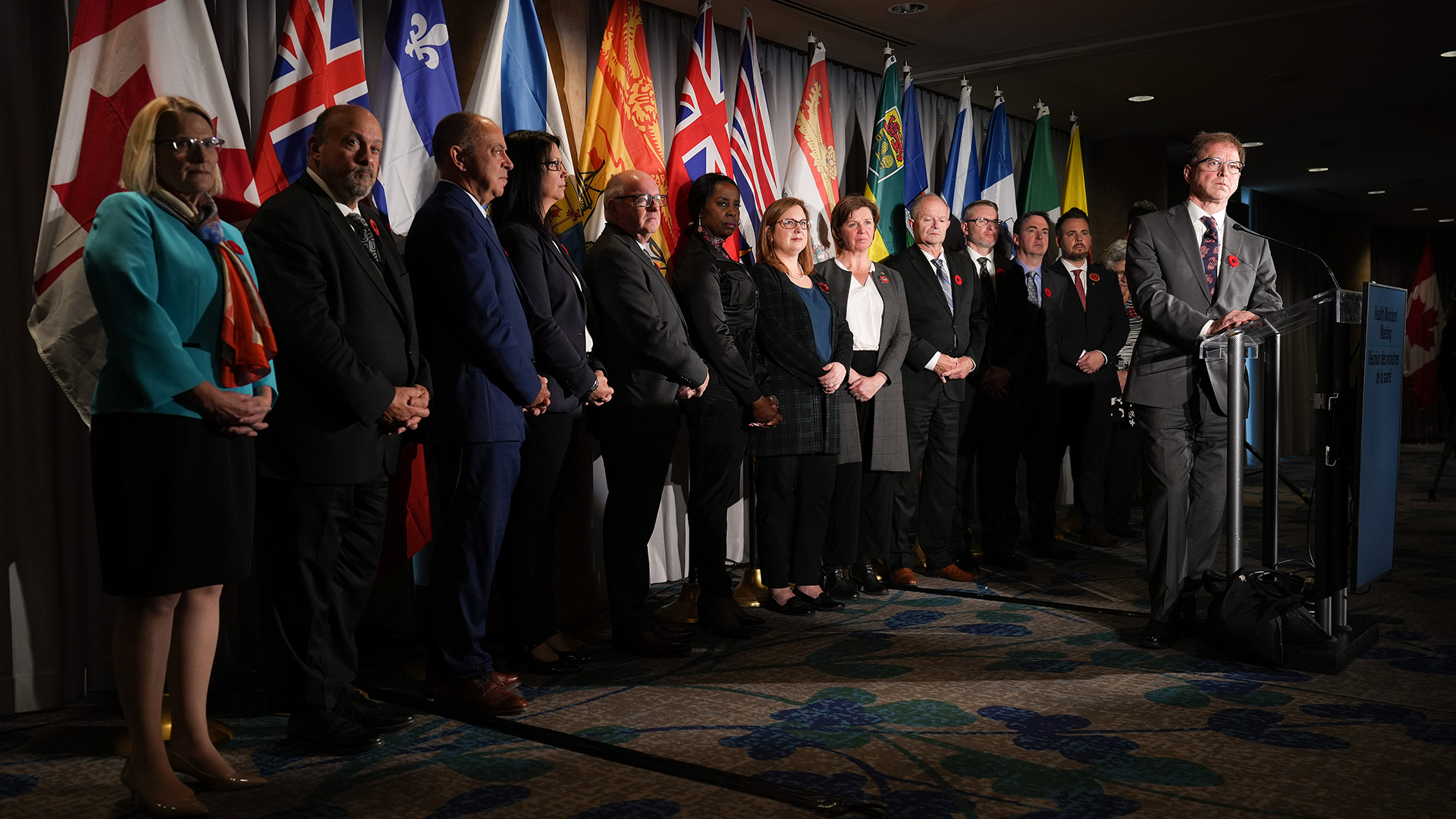(Version française disponible ici)
COVID-19 put Canada’s public institutions to a very hard test. Governments, the media, and health experts, among other institutional actors, were called upon to respond to a rapidly evolving pandemic. Complicating this response was the evolution of knowledge about the virus over time, which changed the strategies employed to mitigate its impact. The public had a real-time, front-row seat to the self-correcting nature of science and to the capacity of institutions to adapt.
How did Canadians assess the performance of these institutions?
Institutional actors performed many essential roles during the pandemic, but we are focusing here on one function in particular: namely, providing the public with reliable information about COVID-19. During the early stages of the pandemic, the public’s questions piled up rapidly: How was the virus transmitted? When and where should I get tested? What steps should I take to protect myself and my loved ones? As the pandemic continued, new questions arose: How do we safely reopen businesses and schools? Where can I get a vaccine? When will this all be over? Many Canadians turned to their governments, public officials, and the media for answers.
To take stock of how Canadians assessed the performance of institutions as information-providers, we focused on two questions in particular: Which institutions did Canadians trust for information about COVID-19? And how did this trust change over time?
Stress testing Canadian governance
To find answers, we turned to the COVID-19 Monitor – a partnership between Vox Pop Labs and McMaster University’s Digital Society Lab. The COVID-19 Monitor was an online self-administered survey of Canadians running in 47 separate waves from March 2020 to February 2022. Each wave consisted of a cross-sectional survey of approximately 2,000 Canadians. As is common in modern online surveys, sampling was not random. Instead, in this instance, participants were pre-stratified based on their sex, age, education, region, income, and partisanship; after the survey was completed, responses were weighted based on these same characteristics to approximate a representative sample.
For our first question – which institutions were trusted? – we pooled across all available waves of the COVID-19 Monitor and focused on eight institutional actors: the World Health Organization, the federal government, provincial and territorial governments, municipal governments, public health officials, local health-care providers, the news media, and social media (for most of these institutions, the data spans March 2020 to February 2022; the exception here is social media, which was first included in the survey in May 2020).
Participants were asked how much they trusted each of these institutions to provide factual and objective information about COVID-19. They could answer in one of four ways: A great deal of trust, moderate trust, little trust, or no trust at all. The results are shown in figure 1.
The general pattern tends to reflect a deference to health experts. The top three institutional actors in whom the public expressed “a great deal of trust” were public health officials, local health-care providers, and the World Health Organization. Conversely, at the other end of the scale, few Canadians expressed “a great deal of trust” in social media – an institution where inexpert commentary easily outpaced expert voices, as well as one that served as a channel to spread COVID-related misinformation and disinformation.
Notably, Canadians as a whole tended not to accord sharply different levels of trust to the COVID-related information provided by their different levels of government. For example, the percentage of Canadians who reported “a great deal of trust” was similar for the federal government (23 per cent), for the provincial or territorial governments (24 per cent), and for the municipal governments (19 per cent).
Now to our second question: How did the public’s assessments of institutional performance change? More specifically, how – if at all – did individuals’ trust in these various institutional actors to provide credible information about COVID-19 change over the course of the pandemic? To answer this, figure 2 shows the levels of trust in each institution across each of the available survey waves of the COVID-19 Monitor. These results underscore that public assessment of institutional performance was generally not static.
To get a better sense of this change, we compared – for each institution – responses in the first four available survey waves with responses in the last four available survey waves. We focused in particular on the change in the share of participants reporting “a great deal of trust.”
Notably, public health officials – among the institutional actors with the highest levels of trust – experienced one of the sharpest declines. The WHO and federal and provincial/territorial governments also saw substantive declines. An important exception here is local health-care providers, who started the pandemic at a relatively high level of trust and experienced relatively little erosion over the tumultuous next two years.
This picture of aggregate change tells only part of the story, though. By its nature, COVID-19 presented different challenges to different groups of Canadians. For example, older individuals tended to have a higher risk of complications from COVID than younger ones. Urban residents tended to have a higher risk of exposure to COVID and, where regional variation occurred, tended to face more stringent public-health restrictions than their rural counterparts. Parents and caregivers of school-age children (not to mention kids themselves) had to manage the significant disruptions of learning from home.
How did institutional trust change among these groups in particular?
We investigated these groups within our survey data. Not all groups differed in how their views of particular institutions changed over time; nevertheless, some patterns emerged.
Trust in public health officials and local health providers declined less sharply among older individuals than among younger individuals; indeed, over this period, trust in local health providers increased among those ages 65 and up. Trust in municipal governments dropped more among urban residents than among rural residents. And trust in public health officials dropped more among individuals with children under age 15 in their household than among those without.
Important policy lessons
Canadians typically trusted representatives of reliable institutions, like public health officials, to provide information to help them navigate the exceptional circumstances of the pandemic. Conversely, Canadians tended to be skeptical of institutions that offered up a mix of expert and inexpert opinion about COVID-19, as in the case of social media. This is reassuring – up to a point.
Over time, trust eroded across all eight of the institutions studied here. While the causes of these declines need to be unpacked, one potential implication is that institutions and public officials have a role in helping individuals navigate uncertainty and expectations. We are all tasked – institutions and citizens alike – with taking actions based on the best available information, but we also need to recognize that the best available information may change, particularly so if we are confronted with novel or rare policy challenges.
On the bright side, Canadians’ trust in local health-care providers to provide credible COVID information was comparatively stable and enduring. While here, too, the causes of this relative stability also deserve further exploration, we might suggest a handful of potential explanations.
For example, the work of local health providers put them in more personal or direct contact with individuals compared with other institutional actors. The place of the health-care system in the Canadian identity may also have shielded these providers from the erosion of trust seen elsewhere. Moreover, while local health providers were on the frontlines of treating and educating people on an individual scale, they were not under the same intense public scrutiny – for example, in the form of daily press conferences – that government leaders and public health officials were.
Regardless of the reasons, policymakers can leverage this reservoir of trust and credibility by enhancing the resources and tools through which local health-care providers can reach out to their patients and local communities to amplify public health messaging.
This article is part of the Resilient Institutions: Learning from Canada’s COVID-19 Pandemic special feature series.











